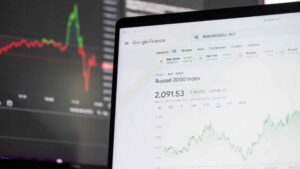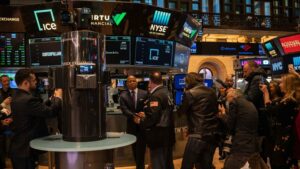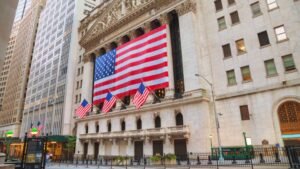The Jackson Hole Economic Symposium is a major event for global central bankers, policymakers and economists, held every year in late August at the Grand Teton National Park in Wyoming, US.
The symposium, which starts on August 21st, is a high-profile economic conference where global economic policies are usually discussed, influencing financial markets.
The main spotlight will be on Federal Reserve Chairman Jerome Powell, who is set to speak on August 22nd and expected to provide insights on how the Fed will move forward on interest rates.
A Brief History of Jackson Hole
The Jackson Hole Economic Symposium was started in 1978 by the Federal Reserve Bank of Kansas City. It has grown from being just a small meeting to now becoming recognized as a global meeting for an economic policy forum.
For example, Paul Volcker, who was a previous Fed Chairman during the 1970s through a period that was referred to as the “Great Inflation”, has boosted the credibility of the symposium. Other previous Fed Chairman Ben Bernanke’s speech in 2010 introduced quantitative easing during the aftermath of the 2008 “Great Recession”, which massively impacted global markets. ⁽¹⁾
The Importance of Jackson Hole Symposium
The Jackson Hole Economic Symposium’s importance has risen over the years due to multiple economic changes and challenges. Major central banks, especially the Fed, face tough decisions like managing inflation while supporting economic growth.
With inflation remaining above the Fed’s 2% target and signs of a weak labor market, the stakes remain high. Financial markets will closely watch Jerome Powell’s speech for insights on future monetary policy changes, as these signals could trigger volatility in stocks, commodities and currencies.
What to Expect from Powell’s Speech
Powell is scheduled to speak on August 22nd at 18:00 GMT+4. His speech is titled “Economic Outlook and Framework Review”. Financial markets will be monitoring the speech and will watch out for signs of whether Powell will signal any possibility of a rate cut in the Fed’s September meeting. The current Fed Funds Rate is at 4.25-4.5%, which is still considered restrictive, slowing economic growth to bring inflation down.
Most recently, Powell and most of his colleagues have adopted a wait-and-see approach to monetary policy. Their concern is that the US could have a persistent inflation problem after Trump hiked import tariffs. So far, this hasn’t resulted in the much-feared spike in consumer prices. Still, core inflation accelerated in July – and so did producer prices.
Powell’s remarks could clarify the Fed’s next moves in managing to balance its dual mandate of price stability and maximum employment. More possible outcomes from Powell’s speech are as follows:
- Signaling a Rate Cut
Powell might signal a rate cut in the September meeting as the Fed responds to a weak jobs report for July. The Bureau of Labor Statistics showed unexpected job growth slowdowns throughout the summer, which raises fears of rising unemployment.
- Caution on Rate Cut Expectations
Powell could state ongoing inflationary pressures, driven by tariffs, which could continue to impact prices. Powell might signal caution on rate cut expectations in September, noting that inflation remains above the Fed’s 2% target.
- Remaining Neutral
With mixed economic data, Powell might not give clear signals, continuing the cautious stance that the Fed is still applying. More economic data is due before the September meeting. Powell has used the Jackson Hole event to balance inflation and employment, where in 2022 he was committed to counter inflation, while in 2023 the focus was on job growth.
Policy Crossroads and Market Challenges
The Federal Reserve remains exposed to risks, as inflation is still sitting above 2% due to tariffs, while job growth slowed and unemployment rose. Fed Chair Powell is likely to address the situation as the US central bank continues to manage its dual mandate. ECB President Christine Lagarde and BOE Governor Andrew Bailey are also set to give speeches on August 23rd.
Financial markets and the Trump administration are still expecting a rate cut, but the Fed chairman remains in a data-driven approach, where any wrong move could impact the Fed’s work.



